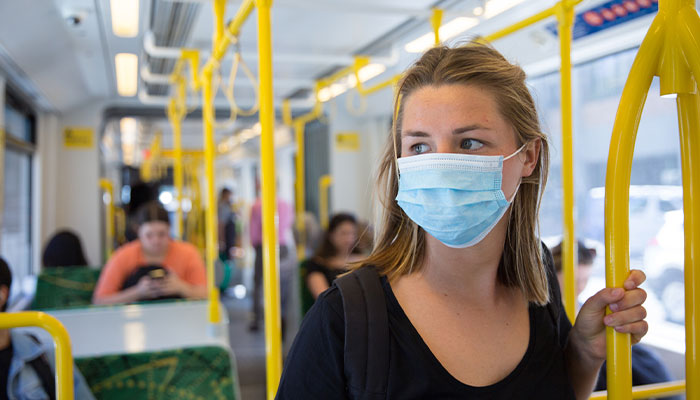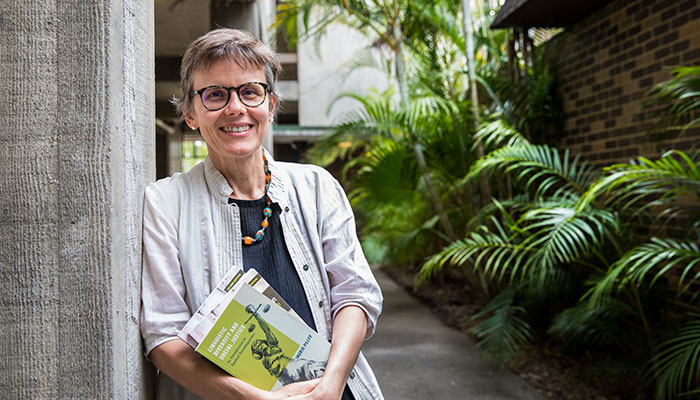Before February 11, when the World Health Organisation christened the novel coronavirus, COVID-19 was not even long-listed for most popular name.

Left out: Multilingual crisis communication has emerged as a global challenge during the pandemic, with migrant communities among those struggling to process public health information.
Just as parents might choose a new baby moniker that keeps all stakeholders happy, WHO advisers were diplomatic: Co and Vi come from coronavirus, D stood for disease and 19 standing for 2019, the year the first cases were seen.
It’s fair to say that COVID-19 was delivered to the linguistic repertoire of the largest number of people after the shortest gestation period.
Naming the disease, however, has been just a minuscule part of the mass communication enveloping the pandemic.
What people most need is local intel. As well as symptoms to look for, they want answers to questions such as where to get tested, hotspots, new cases in the area ...
Almost everyone in the world has had to learn about public health concepts such as 'social distancing', 'droplet transmission' or 'flattening the curve' to avoid getting sick.
Almost everyone has had to understand the specifics of containment measures such as lockdowns, contact tracing, or mask wearing in their jurisdiction.
And almost everyone has had to weigh into public debates that pit health against the economy, link the virus to particular social groups, or politicise the disease.
As a topic of conversation, COVID-19 is the water cooler wunderkind.
But not everyone is joining the chat. Multilingual crisis communication has emerged as a global challenge. Australia’s migrants, refugees, the aged, and those with low levels of literacy have struggled to process public health information about the virus.
More than one in five Australian households speak a language other than English. Between 800,000 and one million people in Australia either don’t speak English at all, or don’t speak it well enough to understand complex information.
What people most need is local intel. As well as symptoms to look for, they want answers to questions such as where to get tested, hotspots, new cases in the area, how many people can come to the house, whether restrictions have changed, and so on. The answers differ across jurisdictions.
The trust factor
There is a real onus on government to make this information as widely accessible as possible. But that kind of information has not kept up multilingually.

About face: Advice about wearing masks is an example of inconsistent communication during the pandemic.
Communication isn’t always consistent. Face masks, for example, have gone from being: not a good idea … might make things worse because people touch their faces more … recommended to wear only if there are symptoms, no need to if there are none … suggest wearing one on public transport but not mandatory ….must wear one anywhere in Victoria.
How much information is available to migrants depends on which language community they belong to. Speakers of languages with sizeable numbers of practitioners – Mandarin, Arabic, Vietnamese, Cantonese or Greek – can glean information from community publications, newspapers, radio stations, Facebook groups, churches, mosques, national organisations and clubs.
Large communities also can rely on diasporic communities like those in the US where the media is big on community TV channels.
The language clusters of, say, the Sydney suburbs of Marsfield, Fairfield, and Mona Vale couldn’t be more different.
But there are smaller languages that may not be affiliated with a particular state, and they can be poorly served both at home and internationally.
Trust is key to selling COVID-19 messages and triumphing over the fake news that has proliferated during the pandemic.
But levels of trust among linguistic minorities might be influenced by a community’s mother country and attitudes of the Australian media. Some groups experience more racism than others, and that can limit the trust they have towards authorities.
Keeping it local
Physical distancing and lockdowns have disrupted our social fabric. Older generations of migrants who don’t speak English well tend to rely on family and friends to step in as language brokers or mediators for everyday information, for dealing with public services, or attending medical appointments.

Different suburbs, different needs: Cabramatta in the local government area of Fairfield, where 80 per cent of households speak a language other than English at home. Photo credit: Maksym Kozlenko
Cognitive or degenerative diseases can further impact language processing. In bilingual populations, these tend to affect the weaker language more. Add to that being in lockdown in an aged care facility, where you can’t have visitors, family or a carer who speaks your language, and the isolation compounds.
What will improve the lot of linguistic minorities in this pandemic?
A communications strategy should be part of a public health strategy. One thing that has been learned about controlling COVID-19 is the importance of having local measures in place, especially around testing and contact tracing.
- Why is it so hard for so many Americans to vote?
- A big but risky budget and the worst could still lie ahead
You need to reach people who are in high traffic places, understanding what their information needs are, and identify language communities in each suburb. Different council areas have different needs, and therefore local communications strategy is important.
The language clusters of, say, the Sydney suburbs of Marsfield, Fairfield, and Mona Vale couldn’t be more different.
In Marsfield, 54 per cent of households speak a language other than English at home, the top three being Mandarin, Cantonese, and Korean. That’s more than the Sydney average of 38 per cent but small in comparison to Fairfield, where 80 per cent of households speak a language other than English at home: the top three being Assyrian, Arabic, and Vietnamese. Mona Vale is on the other end of the spectrum, with only 13 per cent of households speaking a language other than English – the top three are Serbian, German, and Croatian.
A colleague, Dr Alexandra Grey, has done a study of the posters in the Sydney suburbs of Strathfield and Burwood, and she found there was quite a mismatch between the linguistic profiles of these communities and the language of the posters.
A mismatch between the language in which COVID-19 information is communicated and the linguistic repertoires of those who need the information exacerbates the effect of disasters like a pandemic on linguistic minorities.
Emergency preparation and crisis planning
Not having access to timely, high quality, trusted information increases vulnerability. If information is not available in a language people understand, or from a source they trust, they end up looking for answers on social media. And while that is not necessarily a bad thing, the WHO has warned that an over-abundance of COVID-19 information could be misleading and even harmful.
The 'infodemic' that has accompanied the pandemic, WHO warned, is just as dangerous as the virus itself.
At least 2.3 million Australians will not be able to read the two key texts about NSW’s COVID-19 restrictions.
Moroccan clinical neuropsychologist Mohamed Taibine wrote in the 'Language on the Move' blog last month: “Misinformation is like a carcinogenic cell that duplicates irrational and implausible facts, and then transforms them into a growth of seemingly trustworthy and verified information via social media.”
It is important we have a diversified and sophisticated communications strategy, and social media certainly needs to be part of that because that is where most people get their information.
May the force be with you…
Not only migrants have trouble interpreting complex COVID-19 messages. According to the Australian Bureau of Statistics, 13.8 per cent of Australians don’t read above primary school level.

'Infodemic' dangers: Distinguished Professor Ingrid Piller (pictured) says that not having access to timely, high quality, trusted information increases vulnerability.
A little while ago I googled 'nsw corona/covid restrictions'. The top hits all referred to NSW Government websites. I homed in on two of them “What you can and can’t do under the rules” and “Public Health Orders and restrictions”.
A readability analysis using algorithms that are now built into most word processing software showed that one post required 11 years of formal education to read and the other 14 years of formal education.
In other words, at least 2.3 million Australians will not be able to read the two key texts about NSW’s COVID-19 restrictions. In a crisis where the actions of every one of us have a big impact on the course of the pandemic, this is a large number.
What Australia needs is a communications volunteer taskforce.
As the bushfires have taught us, an effective way to deal with disaster is to mobilise a volunteer force, a large segment of the population, in the same way the Rural Fire Service has a system in place for recruiting volunteers, training them, keeping them on hold, and then mobilising them.
- Historical dramas: the best shows on TV you are not yet watching
- Cancer survivors need workplace flexibility: new study
However, for a public health crisis, you need volunteers with different skills and capabilities: people who can translate, interpret; who are willing to sit down with people filling in forms and explain things like what a postcode is (in order to find the nearest testing centre).
We have multilingual talent so we could actually do this. It’s unrealistic to expect the government to put out all the information in all the languages, so we need to shape a communications strategy and a national language policy suitable for a rapidly changing and complex information environment, one that takes into account all the communications channels including social media.
Professor Ingrid Piller, of Macquarie University's Department of Linguistics, has, with Zhang Jie (Zhongnan University of Economics and Law, Wuhan) and Li Jia (Yunnan University, Kunming), edited a special edition of sociolinguistics journal Multilingua, titled 'Linguistic diversity in a time of crisis'. A symposium on the topic will be hosted by Fudan University and Yunnan University over two days on November 5 and November 7 as part of the trilateral cooperation between Hamburg, Macquarie and Fudan universities.


